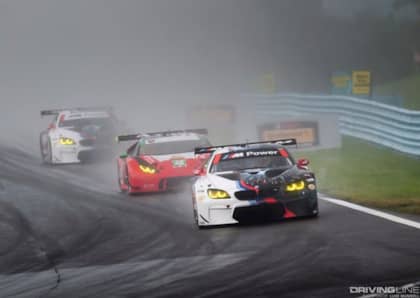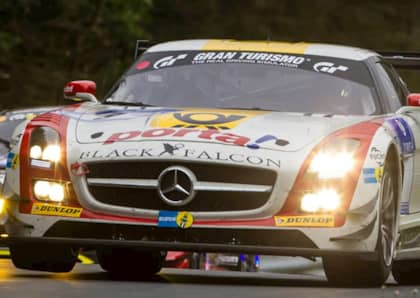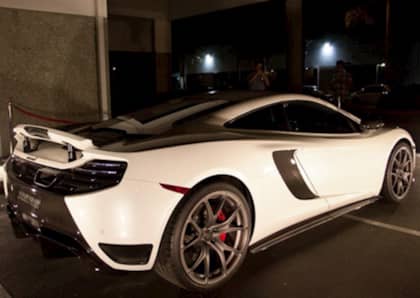IMSA COTA 2017: Why Sportscar Racing Rocks
“If you could afford any car today, which one would it be?”
Chances are you have a quick answer — probably several — to that timeless question. Chances are also good that you rarely get to see one of these cars in person, save for through the windows of high-end dealerships or on the floor of the traveling auto show. Catching one on the road is a more distant possibility, let alone hearing one roar to life or watching it perform at full tilt.
Right? Not so fast.

Unless you’re more a fan of luxury or utility than performance, or just really like cars like the Toyota Camry, the odds are overwhelmingly in your favor that your dream car is among today’s top-performing sports cars competing within IMSA-sanctioned sportscar racing. And seeing several of them modified to the hilt with today’s cutting-edge technology, battling their rivals in a shared quest for ultimate performance, is as easy as buying a ticket to a local event.

UNDERSTANDING THE SPORT
At its most basic level, professional motor racing can be divided into two categories: open-wheel (sometimes called “formula”) and closed-wheel (often called “sportscar”). Unlike open-wheel racing, where organizations like Formula 1 and IndyCar have led the sport for sometimes over a century with little change to their name or structure, closed-wheel racing has been a lot more confusing.
There have been more closed-wheel series than open-wheel, many have gone by their title-sponsors’ names too commonly and suffered identity crises when those sponsors change, and too much competition from rival series has sometimes spread the game too thin. Whatever the reason, closed-wheel racing today is a whole lot less complicated, and as a result, a whole lot more enjoyable.

At the top of the professional sportscar racing ladder in the U.S. today is the International Motor Sports Association (IMSA). They’ve been around for nearly 50 years and were previously the organization behind the American Le Mans Series (ALMS), which merged with its very similar rival, NASCAR-backed Grand-Am Road Racing, in 2013.
IMSA racing series include the WeatherTech (series sponsor) SportsCar Championship (series name); Continental Tire Sports Car Challenge; Prototype Challenge powered by Mazda; Porsche GT3 Cup Challenge; Lamborghini Super Trofeo; and Ferrari Challenge; with classes for different types of competing machines therein.

Let’s take a closer look.
IMSA WEATHERTECH SPORTSCAR CHAMPIONSHIP SERIES
IMSA’s premier competition series, the WeatherTech SportsCar Championship (previously called the “Tudor United SportsCar Championship,” when Tudor sponsored the series from 2013 to 2015), is often where you’ll find the quickest and fastest cars professional closed-wheel cars in North America.
Two styles of cars compete in this series: racing Prototypes and Grand Touring.
1. Racing Prototypes
At first glance, racing prototypes appear radically different from any road-going car. Their low and central center of gravity, massively wide tires and high horsepower (among a myriad of other features) put them ahead of the pack. Though they may not appear to bear any resemblance to road-going cars, often times their respective OEM teams will power them with tuned versions of assembly-line engines and other mechanical components.
Racing prototypes are sub-divided into two classes in IMSA WeatherTech SportsCar Challenge competition:
Prototype class (P)

When the sun’s shining and the track is dry, these are the quickest and fastest closed-wheel cars in North America. Speeds of around 200 mph are common on the fastest tracks. Engines vary from factory-backed team to team, and currently range from Cadillac 6.2L V8s to turbocharged Nissan V6s and Mazda inline-fours. Power output generally ranges from 500 to 600 hp, and disregarding the according weight penalties/advantages, a base weight of 2,046 pounds is standard among their fully equipped carbon-fiber monocoques.
Prototype Challenge class (PC)

Whereas many modifications found on Prototype-class cars can vary by manufacturer, the Prototype Challenge class is a “spec” class, meaning all cars must incorporate the same open-cockpit ORECA FLM09 body and Chevrolet LS3 V8 engine. Weight and horsepower are kept at 2,002 pounds and 485 hp, respectively. Though they’ll typically only reach speeds up to 185 mph, PC-class cars can be quicker through the turns than anything else on the grid. PC is also a pro-am class, which pairs professionals with advanced amateurs in the driver line-up.
2. Grand Touring
For most of us, this is where things get really fun. Products of factory-backed teams, Grand Touring cars can take the shape of the newest Acura NSXs, Ford GTs, Lamborghini Huracans, Porsche 911s, Mercedes-AMG GT S, BMW M6s, Lexus RC Fs, Chevy Corvettes and more, and are powered by tuned versions of each manufacturers’ respective engines.
Power output remains at about 500 hp and top speed at around 180 mph, but these machines can occasionally outpace their prototype brethren in inclimate weather. Though they appear similar to production cars, they’re still custom-built race machines, but most often serve as development testbeds for their respective OEMs.
Grand Touring Le Mans class (GTLM)

Though top speed is generally the same among machines of IMSA’s two GT classes, the GTLMs are a bit quicker around the track due to being allowed a little more power and aerodynamic enhancements. Like the P-class prototypes, GTLM cars display a red number card and have red mirrors and other accents, whereas GTD and PC-class cars display those items in green.
Grand Touring Daytona class (GTD)

GTD cars are virtually identical to their GTLM brothers, despite the GTD class technically being a spec series. Unlike the spec PC-class prototypes, GTD machines can take the shape of the respective factory teams’ production cars, as well as a variety of their respective engines, but certain components (like tires and aero) are mandated to come from one “spec” manufacturer. Power tops out at 500 hp (usually less), and they’re usually just a bit slower around the track — but are every bit as impressive to watch.
IMSA CONTINENTAL TIRE SPORTSCAR CHALLENGE SERIES

Almost always running in tandem with the WeatherTech SportsCar Challenge on IMSA race weekends, are the cars and competitors of the Continental Tire SportsCar Challenge. In contrast to the custom-built GT and Prototype race machines of the WeatherTech SportsCar Championship, this series’ two classes field cars that were pulled straight off manufacturers’ production lines and then modified for race duty.
Grand Sport class (GS)

GS-class competition is where you’ll find modified versions of some of the top-performing import, domestic and European cars in showrooms today — cars like the BMW M3, Porsche 911, Ford Shelby GT350R-C and Mustang Boss 302 R, Nissan 370Z, Subaru WRX and even the McLaren GT4. Relatively minor modifications and engine tuning yield 400-500 hp and top speeds of 175 mph, preserving much of the same hardware as these cars do in dealerships. GS cars are easily differentiated from ST-class cars by their black windshield banners.
Street Tuner class (ST)

Also based on production counterparts, cars of the ST class are most akin to what we own or strive to build. ST-class cars get a yellow windshield banner, and popular platforms include the BMW 128 and 325, Porsche Boxter and Cayman, Honda Civic Si, Nissan Altima, Fiat 500, Mazda MX-5, and more. Horsepower ranging from 220 to 280 is common, as are top speeds in excess of 150 mph. Though the cars of the ST class are the slowest in IMSA competition, they most commonly serve as development opportunities for emerging vehicle tech and optional hardware, and under certain conditions, can actually outperform their GS rivals.
LAMBORGHINI SUPER TROFEO SERIES

For decades, Lambo guys have had to endure the taunting from Ferrari and Porsche guys about how their brand of choice did a lot of talking and showboating of its performance potential, but seldomly (at least, compared to Ferrari and Porsche) proved itself in racing. But as of the inception of Lamborghini’s Super Trofeo international competition, that’s no longer the case.

Super Trofeo is both a one-make series (open only to Lamborghini Huracan LP620-2 Super Trofeo cars) and a spec series (all competing cars are nearly mechanically identical). It’s also unique in that while it races alongside IMSA competition in North America, it also includes series in Europe and Asia. Championship competition in each region exists for teams, as well as professional drivers, amateur drivers and “youngsters,” and provides a World Final event for drivers in each region to compete for top honors.

Today’s Huracán LP 620-2 Super Trofeo competition car is an amazing machine. It features a carbon-fiber-reinforced aluminum body with aerodynamics developed in conjunction with Dallara Engineering. Powering the cars is the production Huracan’s 5.2L V10 engine, tuned by MoTeC M182 and PDM 30 electronics to output a rock-solid 620 hp, which is transferred to the rear wheels via an X-Trac sequential six-speed transmission. Ohlins TTX two-way adjustable dampers and rigid bushings help form the suspension, and spec 315-series (rear) and 305-series (front) is standard around the cars’ 18-inch forged monobloc center-lock wheels.

Top speed is limited to 202 mph, and lap times are fast and competition fierce. Contact is common, and while the lack of diversity in Super Trofeo races may seem dull to some, watching million-dollar supercars duke it out at 200 mph just never gets old.
PORSCHE GT3 CUP CHALLENGE SERIES

And finally, there’s IMSA’s second one-make spec series: the Porsche GT3 Cup Challenge. There are two classes here: Platinum, for new-for-2017 Porsche 911 GT3 Cup cars; and Gold, for 2014-2016 Porsche 911 GT3 Cup cars. A Masters Championship also is conducted in the Platinum class. Unlike most of the IMSA field, Porsche GT3 Cup competition is open only to semi-professional and amateur drivers.

Like the cars of the Continental Tire SportsCar Challenge series, Porsche GT3 Cup cars are also production-based and modified in terms of performance and safety for racing duty. At their heart is a naturally aspirated, 4.0L horizontally opposed Porsche six-cylinder boxer engine, generating 485 hp and mated to a Porsche six-speed sequential dogbox.

The new-generation Cup car presents a multitude of improvements over its predecessor that may bore anyone who’s not a true Porsche diehard, but let it be said that they are a bit faster and more durable on track.

Sure, power output is nearly identical to production-model GT3s, and top speed is often drag-limited to be slightly lower on the race car, but where else can you see (and hear, and feel) 20 of Porsche’s greatest car running full tilt at once?
HOW IT ALL WORKS

A typical IMSA race weekend sees several of these series activate at once, and when we met the series at Circuit of the Americas in Austin, TX, a few weeks ago (where these images were shot), all of them participated.
Each series was given dedicated track time to conduct the three main components of the weekend:
1. Practice
After teams set up, they’re given time during the first days of a typical four-day event to hit the track and log data, troubleshoot any issues, work on their pit and driver-change strategies and allow drivers time to familiarize themselves with the track. Typically, all classes of a particular series practice at once, and drivers are generally forgiving with one another in allowing passes and faster/slower paces.


2. Qualifying
This is where competition begins. Qualifying sessions last 15 minutes, and one is provided for competing machines of each particular class of a series, and each class qualifies separately. The goal of qualifying is to clock the quickest and fastest single lap possible around the racetrack, and the order in which drivers do this by the end of the qualifying session is the order in which they’ll start the race, with the fastest driver leading their respective class.

Since all-out speed is of primary concern, teams may turn up power, run with less fuel or run on the most aggressive tires possible. Qualifying is a great place to see drivers push the limits, and with all cars of a series generally on track at once during qualifying sessions, the drama can be intense.

3. Race Day
Here’s where it all comes together. Festivities start with a brief period before the race in which fans are invited onto the grid to mingle with drivers and teams, and see their amazing machines up close.


Then, drivers and cars file in behind a pace car in their qualifying orders, and take to the track behind the pace car.


After the first lap the pace car pulls off, and drivers maintain their formation and speed until they cross the start/finish line under a green flag, and after that all bets are off. What ensues is very often a brutal fight to the finish, for as long as the race lasts.


IMSA races can range from sprint races that last under an hour to several hours, to endurance races as long as one full day (as is the case with the season-opening Rolex 24 at Daytona). Often times pit stops and driver changes are mandatory, and longevity, fuel consumption, tire and brake life, and driver fatigue all become important parts of a winning strategy. All classes of each series race at once (even though drivers are only competing among each other in the same class), so sharing the course with competitors of faster/slower classes presents yet another challenge.


Each car displays a number in its LED readout as it races; that number indicates the car’s position from the lead in its respective class. Once the duration of the race has passed, the chief starter will wave the checkered flag at the start/finish line, marking the end of the race for each competitor as their car crosses the line.


Race wins are awarded in each class to competitors who have logged the most laps or who has crossed the line first among competitors logging the same amount of laps. Season points are awarded for race wins and are tallied to determine Driver and Manufacturer championship standings at the end of the season.

At each stop, race winners celebrate their achievements...

...others reflect on what can be done better next time around...

...and everyone shares in the celebration of having concluded another awesome event.

WHY SPORTSCAR RACING ROCKS
Anything can happen in a race. Unexpected twists of fate can lead to the sure bets ending their race early, underdogs regularly come through for the win and there's a whole lot of everything in between — crashes and car fires included. The best way to watch all of the action is to stream the event online or watch it live on TV, but nothing compares to seeing, hearing, feeling, even smelling it all in person. Once that aroma of race gas, brake pads and burnt rubber fills your soul, you’ll never be the same. Guaranteed. Maybe so much so that you’ll wonder why so many others haven't gotten into it!

...yet, that is.
For more information on IMSA racing, including the full season race and broadcast schedule, visit www.IMSA.com.











